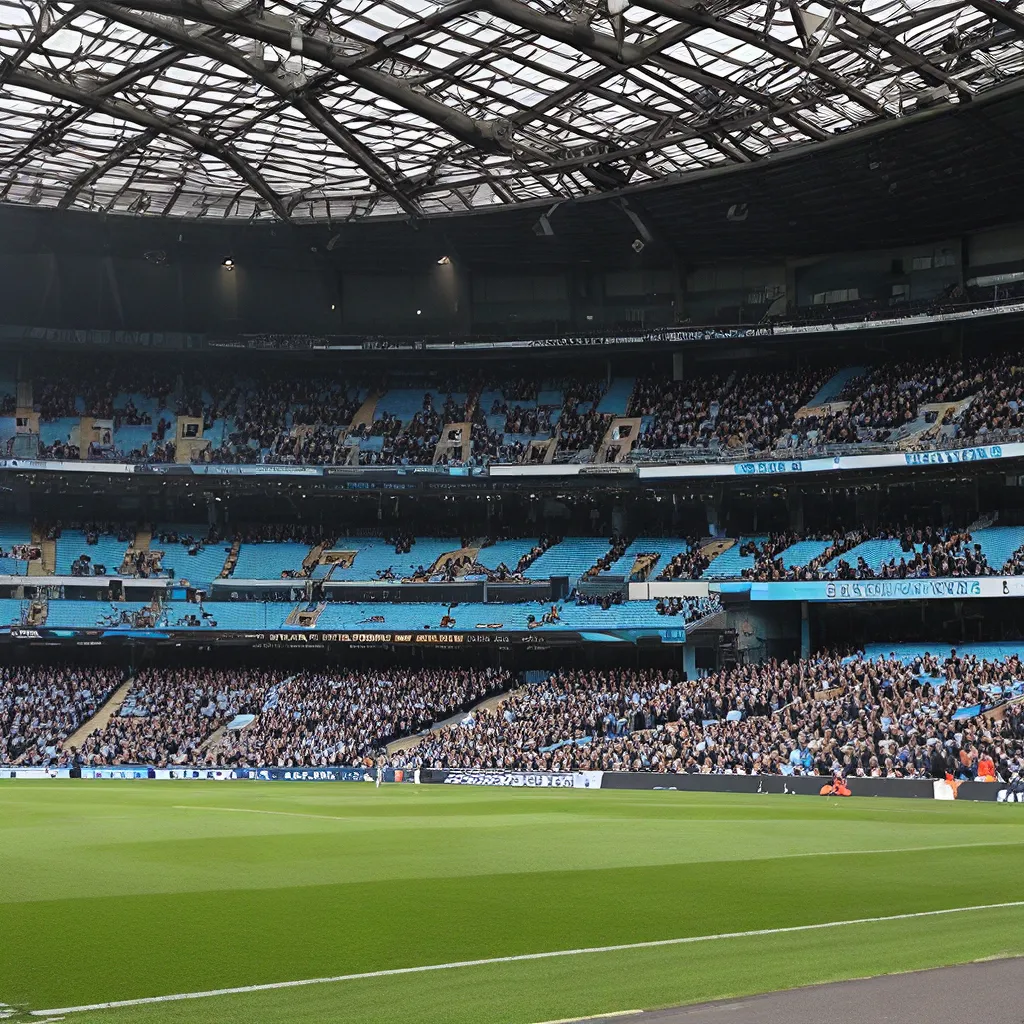
The Birth of an Icon
The Etihad Stadium, formerly known as the City of Manchester Stadium, has long been a source of pride and fascination for football enthusiasts around the world. Nestled in the heart of Manchester, England, this architectural marvel has witnessed the triumphs and challenges of one of the most successful and storied clubs in the sport’s history – Manchester City.
The stadium’s origins can be traced back to the late 1990s, when Manchester was awarded the honor of hosting the 2002 Commonwealth Games. The city recognized the need for a state-of-the-art venue to accommodate the event, and thus, the ambitious project of the City of Manchester Stadium was born. Designed by the renowned architectural firm Populous, the stadium was envisioned as a testament to Manchester’s commitment to sports and its unwavering spirit.
Populous, the architects behind the Etihad Stadium, are renowned for their work on numerous iconic sporting venues, including the London 2012 Olympic Stadium, Wimbledon’s Centre Court, and the Emirates Stadium, home to Arsenal Football Club.
A Transformative Journey
The construction of the stadium was a monumental undertaking, with a price tag of £112 million. The project was completed in time for the 2002 Commonwealth Games, where the venue hosted a range of events, including athletics, rugby, and football. Following the successful completion of the games, the stadium underwent a transformation to become the new home of Manchester City Football Club, who had previously played at the Maine Road stadium.
In 2003, Manchester City signed a 15-year naming rights deal with Etihad Airways, the national airline of the United Arab Emirates. This partnership not only provided a significant financial boost to the club but also marked the beginning of a new era for the stadium, which was subsequently renamed the Etihad Stadium.
Under the ownership of Abu Dhabi United Group, Manchester City experienced a remarkable renaissance, becoming one of the most dominant forces in the Premier League. The Etihad Stadium played a pivotal role in this transformation, serving as the backdrop for the club’s resurgence and the development of a passionate fan base.
Architectural Marvels and Technological Innovations
The Etihad Stadium is renowned for its innovative and visually stunning design. The stadium’s distinctive bowl-shaped structure, with its steep stands and close proximity to the pitch, creates an immersive and electrifying atmosphere that has become a hallmark of Manchester City’s home matches.
One of the stadium’s most striking features is its retractable roof, which can be closed in inclement weather to provide a more comfortable experience for both players and spectators. This technological marvel not only enhances the stadium’s functionality but also showcases the city’s commitment to innovation and sustainability.
Old Stadium Journey reviews the Etihad Stadium as a world-class facility, praising its modern amenities, impressive capacity, and the electric atmosphere it generates on matchdays.
A Beacon of Community Engagement
Beyond its role as a premier sporting venue, the Etihad Stadium has also become a hub for community engagement and social impact initiatives. The club’s charitable foundation, the Manchester City Foundation, has spearheaded numerous programs aimed at empowering local youth, promoting education, and fostering social inclusion.
One such initiative is the City Football Academy, a state-of-the-art training facility located adjacent to the Etihad Stadium. This holistic development center not only nurtures the next generation of Manchester City players but also provides educational opportunities and support services for young people in the local community.
The Etihad Stadium’s commitment to community engagement has earned it a reputation as a model for how modern sports franchises can positively impact the lives of those they serve. This ethos of giving back has helped to cement the stadium’s status as a beloved institution within the city of Manchester and beyond.
Embracing the Future
As the Etihad Stadium continues to evolve and adapt to the changing landscape of the sport, it remains a testament to the vision, dedication, and resilience that have defined Manchester City’s journey. From its humble beginnings as a venue for the 2002 Commonwealth Games to its current status as a global footballing powerhouse, the stadium has become a symbol of the city’s unwavering spirit and its unwavering commitment to excellence.
Looking ahead, the Etihad Stadium is poised to play a pivotal role in the club’s continued success and the city’s ongoing transformation. With its state-of-the-art facilities, innovative technology, and deep-rooted connection to the community, the stadium is well-positioned to remain a cornerstone of Manchester’s sports and entertainment landscape for years to come.
As Manchester City continues to chase greatness on the pitch, the Etihad Stadium will undoubtedly be the stage upon which their dreams and aspirations are realized, cementing its legacy as one of the most iconic and influential stadiums in the history of the game.

